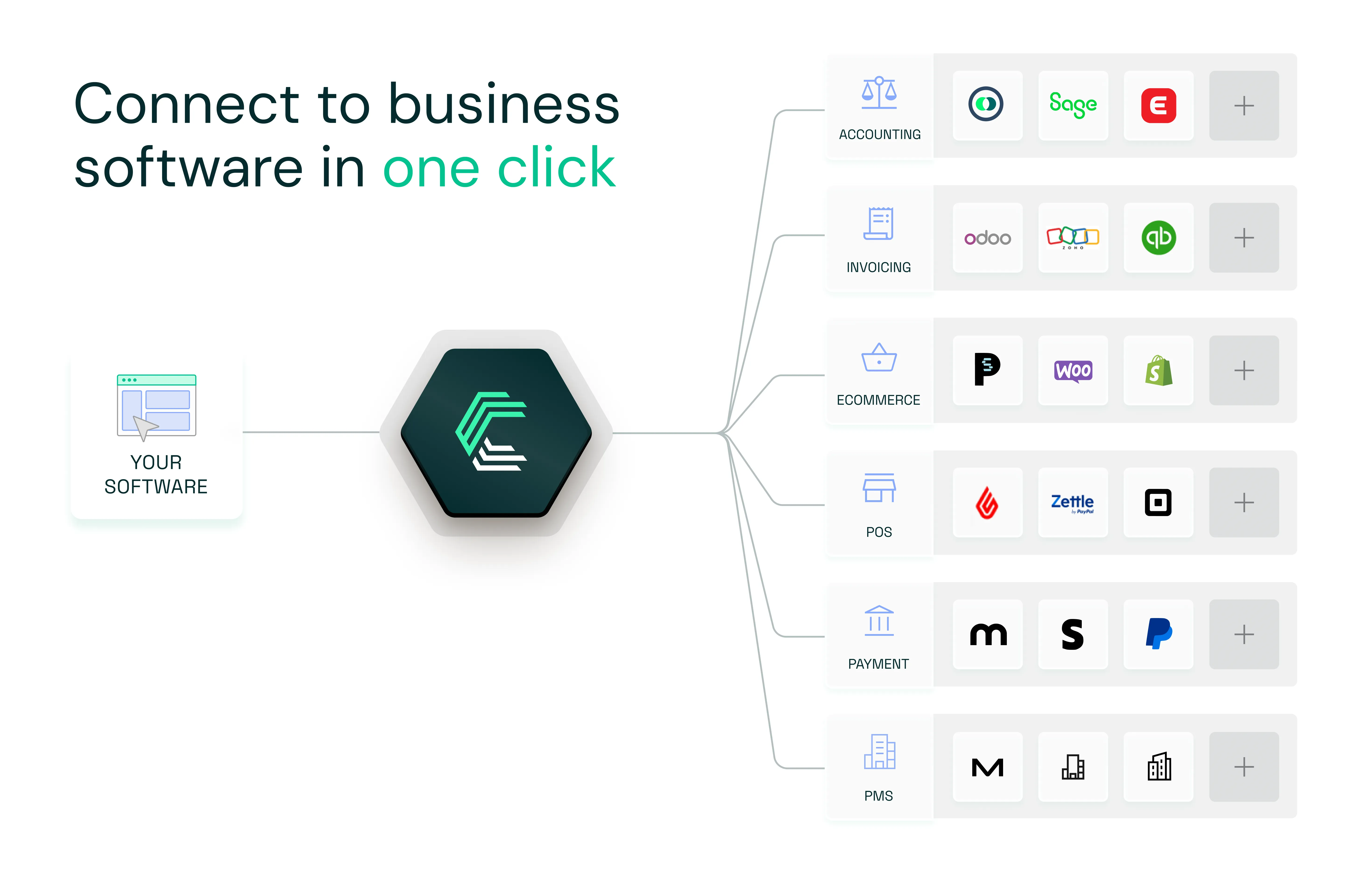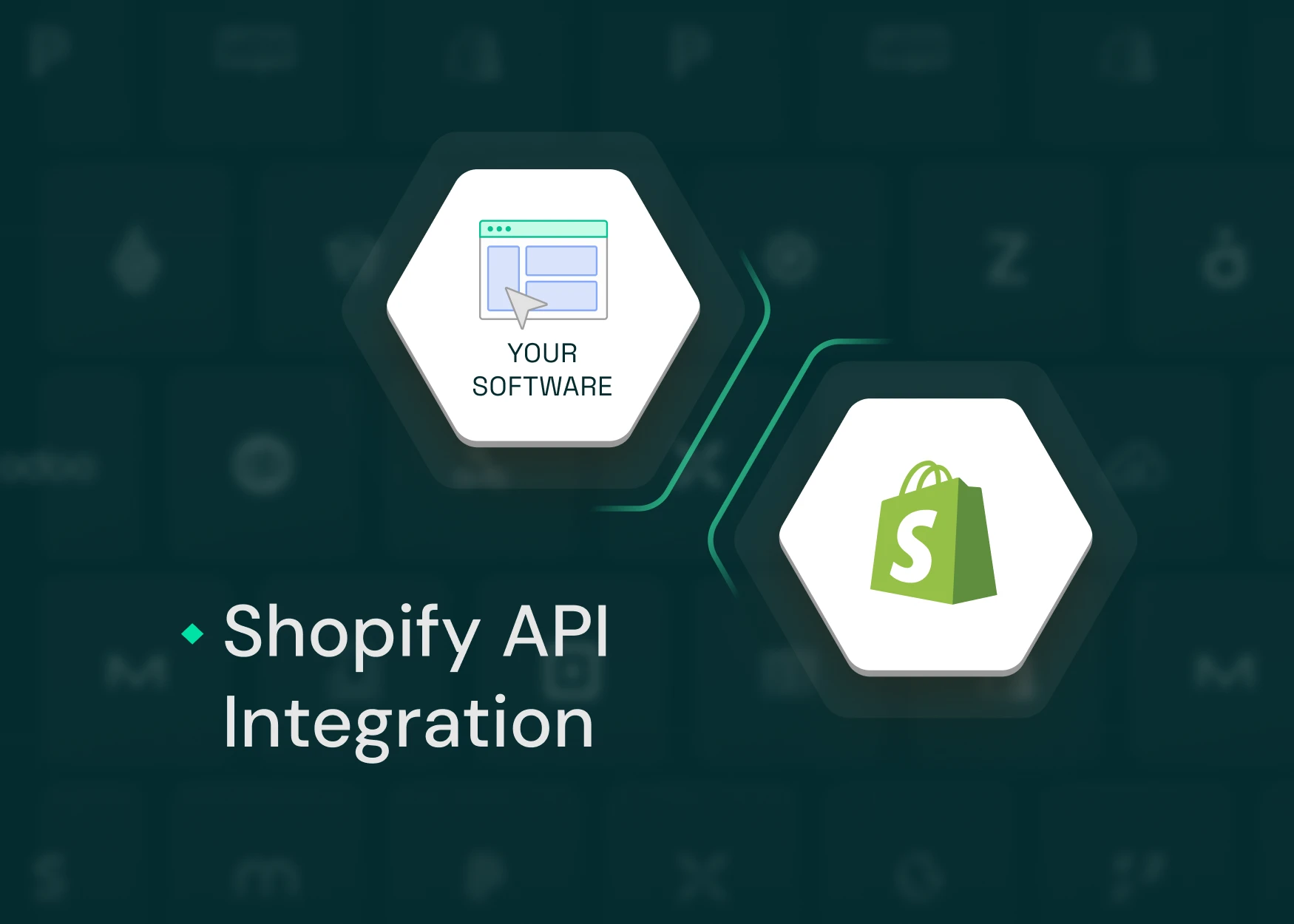Shopify is one of the most popular e-commerce platforms worldwide, empowering merchants to build, manage, and grow their online stores. With a rich ecosystem and highly customizable architecture, Shopify is used by businesses of all sizes looking to scale their digital commerce.
Offering a Shopify API integration allows you to:
- Setup automated processes for your users
- Access ecommerce order and customer data in your product to offer additional features
- Enhance overall accuracy by reducing the risk of error associated with manual entries
In this guide, you’ll find everything you need to successfully integrate with the Shopify API—from core concepts and technical details to practical use cases.
What is the Shopify API?
The Shopify API is a collection of web services that let you programmatically access and manipulate data within a Shopify store. It supports a wide range of functionalities including:
- Product and inventory management
- Order creation and processing
- Customer data synchronization
- Fulfillment and return operations
Shopify is part of Chift’s Unified Ecommerce API, which allows you to integrate with multiple ecommerce platforms—including WooCommerce and PrestaShop—through a single connection.
[[cta_unified_ecommerce]]
Examples of Shopify API integration use cases
A Shopify API integration streamlines operations and adds powerful functionality to your product. Below are common use cases among software vendors:
Synchronize ecommerce orders, invoices and clients with accounting software - Pennylane
Automatically sync Shopify orders, customer details, and invoices with accounting software to eliminate manual work and ensure data consistency across platforms. It is one of the many processes our client Pennylane automates with Chift.

Read the full Pennylane case study here: How Pennylane simplifies integrations and achieves super-connectivity with Chift
Pull orders and client data into an invoicing or CRM software - Regulo
Easily retrieve Shopify orders and customer data and send them into your CRM or invoicing software to enable sales tracking, customer lifecycle management, or billing automation.
Invoicing software Regulo uses our Unified Ecommerce API to connect to Shopify and other popular ecommerce platforms.

Explore more customer success stories on our Chift case studies page.
Getting you started with your Shopify API integration
To integrate your solution with Shopify, you need to use OAuth2 for authentication. Here’s what’s required:
- Client ID and Client Secret
- The Shopify store name
- A list of required OAuth scopes, such as:
%%write_draft_orders%%%%write_orders%%%%write_customers%%%%write_products%%%%read_returns%%%%write_inventory%%%%read_all_orders%%
With proper configuration, you can securely authenticate users and start pulling/pushing data to their Shopify store.
Our recommendations for integrating with Shopify
To ensure a secure, efficient, and scalable integration with Shopify, here are some important best practices to keep in mind:
- Always use OAuth2 for secure access management.
- Use the latest API version to take advantage of new features and avoid deprecated endpoints.
- Never hard-code API keys—store them securely.
- Monitor rate limits by checking the
X-Shopify-Shop-Api-Call-Limitresponse header to stay within usage bounds. - Implement caching to reduce unnecessary calls and improve performance.
Integrate with Shopify and other popular ecommerce platforms through a single Unified Ecommerce API
Chift’s Unified Ecommerce API makes it simple to connect your app with leading ecommerce platforms such as Shopify, WooCommerce, and PrestaShop. By using a single integration point, you eliminate the need to manage and maintain multiple connectors.
This approach accelerates development, reduces maintenance overhead, and allows you to expand your integrations effortlessly across different markets.

Looking to scale your ecommerce integrations? Reach out to our team to schedule a personalized demo.
Shopify API integration FAQ
What Shopify endpoints are accessible?
Chift’s Shopify connector gives you access to a wide range of end-points, including but not limited to:
- Countries
%%/countries%% - Payment methods
%%/payment-methods%% - Products
%%/products%% - Orders
%%/orders%%
Consult our Shopify API documentation for a list of all the available endpoints in our Unified Ecommerce API.
What are Shopify API rate limits?
Shopify's REST API rate limit follows a leaky bucket algorithm and allows:
- 40 API requests per second for private and custom apps.
- 2 API requests per second for public apps (embedded apps using OAuth).
How many APIs does Shopify have?
Shopify provides a wide variety of APIs for different use cases:
- Admin API (REST & GraphQL)
- Storefront API (GraphQL)
- Checkout API
- Payments Apps API
- Billing API
- Partner API
- Discounts API
- GraphQL Bulk Operations API
- Event API (Webhooks)
- Customer Privacy API
- Hydrogen & Oxygen APIs
Chift leverages the Admin API (REST & GraphQL) to power our Shopify integration, ensuring maximum flexibility and performance.
Where can you find the Shopify API key?
For Private or Custom Apps:
- Log in to your Shopify Admin.
- Go to Settings > Apps and sales channels.
- Click Develop apps (enable if necessary).
- Select or create an app.
- Under API credentials, retrieve your API key and secret.
- Click Reveal token once to get the Admin API access token (store it securely).
For Public Apps (OAuth):
- Go to the Shopify Partners Dashboard.
- Navigate to Apps > Create App.
- Once created, go to API Credentials to find your Client ID (API Key) and Client Secret.
What is the difference between Shopify API REST and GraphQL?
Here are the main difference between Shopify’s REST and GraphQL APIs:

Are Shopify APIs free?
Most Shopify APIs, including the Storefront API and Admin API, are available at no extra cost. However, access to certain advanced APIs—like the Checkout API—may require a Shopify Plus or Premium Plan. Always check Shopify’s documentation to understand what’s included with each plan.
Does Shopify have a rest api?
Yes, Shopify offers a robust REST API as part of its Admin API. But Shopify is deprecating certain REST-based APIs in favor of APIs based on GraphQL. Chift already supports the REST and GraphQL version of the Shopify’s Admin API.

